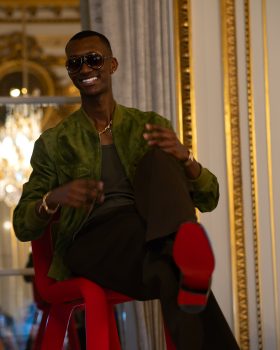Fashion For Development: Bibi russell
Bibi Russell Top model who has walked for Yves Saint Laurent, Karl Lagerfeld and Giorgio Armani; graduate from London College of Fashion, “one of twenty people to watch in the millennium in Asia” per Asiaweek; founder of “fashion for development”. Having returned to Bangladesh in 1994, she opened her own fashion house Bibi Productions and employed several thousand underprivileged weavers and craftspeople. Russell also participated in Commonwealth Fashion Exchange in 2018, with an exhibit at Buckingham Palace with the support of the Queen and the Duchess of Cambridge.For her efforts to give back to Fashion, she was awarded Honorary Fellowship of The London Institute, Designer For Development and Artist for Peace by UNESCO. She speaks to us on her ideology of sustainable fashion.

Fashion For Development : Bibi Russell working with rural craftspeople
“I left my career as a top model overseas because I always believed the people of Bangladesh needed me. Today, after decades of experience, I am happy I chose this path. I began with only one office in Dhaka, Bangladesh from where we connect to the rest of the world. But I spend most of my time in villages, working with craftspeople. Weaving particularly is an age-old vocation. Through art and design, it is my intention to demonstrate the immense skills and expertise of local artisans. Bibi Productions is a self-funded project and hundreds of underprivileged craftspeople and weavers depend on me for their livelihood.
My belief is that if I help showcase their craft, it will encourage designers worldwide to consider using it in their collections, leading to development of rural communities through Fashion. What can be better for craftspeople than their centuries-old art being embraced in the ‘fashion’ umbrella and recognised worldwide? The exposure will help increase their confidence and encourage them to stay rooted in their culture and evolve it. The restoration of the historical glory of our weavers and craftspeople, helping them advancing their economic life and creativity, is my vision. As an example, I held my first show at Unesco, in 1996. The Organization recognized the link between fashion and development. Titled Unesco Weavers of Bangladesh, it was covered by television channels worldwide and supported by Federico Mayor, Director-General, Unesco and Queen Sofía of Spain. They perceived the importance of creative and social economy.
I request development agencies, fashion designers and social media to join forces to support traditional craftspeople by bringing together components such as culture and creativity, skill, capital, technical assistance and marketing — before their ancient skills are lost. We must appreciate and encourage confidence at the least by dedicating time and energy in their art. Since the dawn of civilisation, art and crafts have been sources of income and livelihoods for artisans. today, too, i love travelling to the interiors, sitting with artisans and understanding their process, which enabled me to experiment with color, weight and design. That is how we find a union of modern western culture and the culture and creativity of village craftspeople. They deserve a better market and bigger opportunities, which is why I will always endeavour to preserve heritage, foster creativity, provide employment, empower women and work towards the eradication of poverty. That’s what I’m committed to.”
Jasmeen Dugal is Associate Editor at FashionABC, contributing her insights on fashion, technology, and sustainability. She brings with herself more than two decades of editorial experience, working for national newspapers and luxury magazines in India.
Jasmeen Dugal has worked with exchange4media as a senior writer contributing articles on the country’s advertising and marketing movements, and then with Condenast India as Net Editor where she helmed Vogue India’s official website in terms of design, layout and daily content. Besides this, she is also an entrepreneur running her own luxury portal, Explosivefashion, which highlights the latest in luxury fashion and hospitality.









